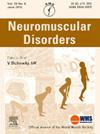History of the histopathology of the peripheral nerves
IF 2.7
4区 医学
Q2 CLINICAL NEUROLOGY
引用次数: 0
Abstract
The history of peripheral neuropathology, in particular the study of the normal nerve, spans centuries and involves significant contributions from many scientists and physicians. The earliest knowledge of nerves dates back to ancient Greece, accelerating from the 18th century onwards. This historical overview highlights the evolution of our understanding of peripheral nerves, from ancient theories to modern scientific discoveries, illustrating the collaborative and progressive nature of scientific progress. This article discusses various neurological theories such as “neuronal circulation” and the concept of “nerve fluid”, and explains the main stages in the description of the various principal structures of the normal peripheral nerve. It also explores the main steps of the historical evolution of peripheral neuropathology, focusing on the pathological analysis of peripheral nerves and various pathological key concepts (nerve degeneration, demyelination, nerve vasculitis, amyloid deposits, etc.). The development of microscopy techniques has significantly advanced our understanding of peripheral nerve histology and pathology. Early studies involved examining nerves from autopsies and later from living patients, leading to the establishment of nerve biopsy as a diagnostic tool. The article discusses the debate surrounding nerve biopsy techniques, including the choice of nerves and sampling methods.
周围神经的组织病理学史。
周围神经病理学的历史,特别是对正常神经的研究,跨越了几个世纪,涉及许多科学家和医生的重大贡献。关于神经的最早知识可以追溯到古希腊,从18世纪开始加速发展。这一历史概述突出了我们对周围神经的理解的演变,从古代理论到现代科学发现,说明了科学进步的协作和进步本质。本文讨论了诸如“神经元循环”和“神经液”的概念等各种神经学理论,并解释了正常周围神经各种主要结构描述的主要阶段。探讨了周围神经病理学历史演变的主要步骤,重点介绍了周围神经的病理分析和各种病理关键概念(神经退行性变、脱髓鞘、神经血管炎、淀粉样蛋白沉积等)。显微技术的发展大大提高了我们对周围神经组织学和病理学的认识。早期的研究包括从尸体解剖中检查神经,后来从活着的病人中检查神经,从而建立了神经活检作为一种诊断工具。本文讨论了围绕神经活检技术的争论,包括神经和采样方法的选择。
本文章由计算机程序翻译,如有差异,请以英文原文为准。
求助全文
约1分钟内获得全文
求助全文
来源期刊

Neuromuscular Disorders
医学-临床神经学
CiteScore
4.60
自引率
3.60%
发文量
543
审稿时长
53 days
期刊介绍:
This international, multidisciplinary journal covers all aspects of neuromuscular disorders in childhood and adult life (including the muscular dystrophies, spinal muscular atrophies, hereditary neuropathies, congenital myopathies, myasthenias, myotonic syndromes, metabolic myopathies and inflammatory myopathies).
The Editors welcome original articles from all areas of the field:
• Clinical aspects, such as new clinical entities, case studies of interest, treatment, management and rehabilitation (including biomechanics, orthotic design and surgery).
• Basic scientific studies of relevance to the clinical syndromes, including advances in the fields of molecular biology and genetics.
• Studies of animal models relevant to the human diseases.
The journal is aimed at a wide range of clinicians, pathologists, associated paramedical professionals and clinical and basic scientists with an interest in the study of neuromuscular disorders.
 求助内容:
求助内容: 应助结果提醒方式:
应助结果提醒方式:


